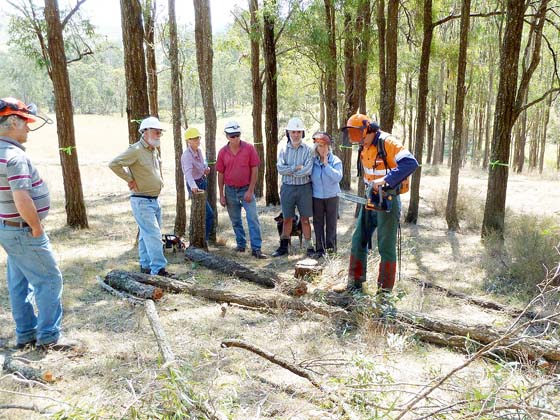September 2012 field day
Eighteen HFFN members and friends attended the regrowth management field day at the 640 acre grazing property at Mirannie. Tree types scattered throughout the property include spotted gum, bluegum, redgum. yellow box, grey box and narrow leaf ironbark. A stand of post 1990 regrowth trees, consisting almost entirely of narrow leaf ironbark was inspected and trees for retention were marked with tape. Criteria for retention included biodiversity, dominance, form, edge trees, mature seed source, potential posts and interestingly dead small trees that will fall of their own accord. Some of the trees for retention were pruned using a pole saw and electric clippers on pole, the latter capable of the neater job. Some of the remaining trees were felled by chainsaw. The front wedge cut – bottom cut horizontal and in about one quarter of the diameter and the top cut angled at about 30 degrees; the back horizontal cut slightly above the front horizontal cut; and the resulting hinge of width about 15% of diameter were demonstrated. The final felling act was either pulling from a safe distance by previously attached rope and or by inserting a wedge in the back cut. It was stressed that those planning on felling trees should first attend a reputable course. An electrical chainsaw was used for removing branches quickly from the felled trees. Stumps were then cut off close to ground level to reduce obstacles to later traffic. Any stumps to be left to coppice should be cut horizontal on top about a diameter height above ground level. This was a most informative and enjoyable day.
